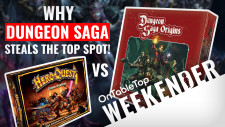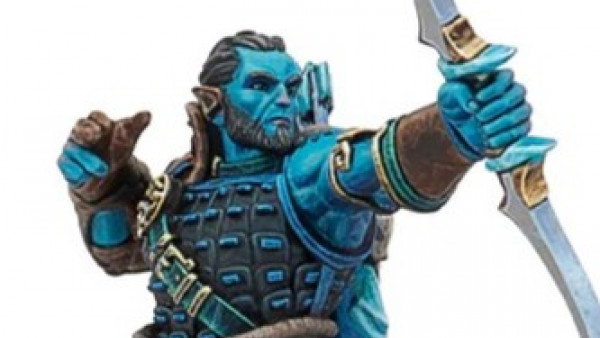Home › Forums › News, Rumours & General Discussion › Here’s a good video to listen to concerning your AI-"art"
This topic contains 7 replies, has 5 voices, and was last updated by ![]() blinky465 2 years, 2 months ago.
blinky465 2 years, 2 months ago.
-
AuthorPosts
-
November 13, 2022 at 5:16 pm #1788998November 15, 2022 at 4:18 pm #1789323
I struggle with this video – a lot of it sounds like sour grapes. I mean, sure, AI-derived art might end up a little “formulaic” and it leans very heavily on prior art. But it’s the visual equivalent of Stock Aitken and Waterman’s Hit Factory in the late 80s. Nicking hooks and lines and melodies that lots of people have indicated they like – pop hits that appeal to the masses. It’s not “soulful” it doesn’t require a massive amount of effort. But, let’s be honest, Bananarama belted out a couple of great pop hits too.
The whole section about using images as references is confused and meaningless to me. The whole Michaelangelo argument was blown out of the water a few years ago, when it was *proven* that many of the “classic” artists (Vermeer and Rembrandt are two such examples) used lenses and mirrors to create drawings so accurate, a computer could model a perfect 3d chandelier from a flat image (I forget the exact details, but there was a documentary about this by David Hockney a few years ago). Humans *can* replicate images (almost) exactly. The argument in this video goes “well, if you *can* draw really well, that’s because you’re a great draftsman in your own right” without accepting that in order to become a great draftsman, you need lots and lots (and lots) of practice – a technique reduced to minutes and seconds instead of years by AI.
You should only use art as a reference if you enjoy drawing? You can only make art if intent and outcome are the same? Nonsense.
Sorry. I can’t agree with a single point in this video.
My initial reticence towards AI art had nothing to do with how it was created, just that the end result was pretty poor. Even in just a few months, it’s got to the point where it’s pretty darned impressive.The main complaint in this video is that images are used without reward to their creators.
But at no point was it asked, how did the images get online in the first place? The assumption is that every single contributor resents having their artwork curated and organised. Most people created their art and put it online to shout out to the world “look at what I made”.But what if it *was* rewarded?
What if every single artist who had their imagery categorised by AI had been financially rewarded?
Many of the arguments in this video would then ring very hollow.November 18, 2022 at 6:42 pm #1789670people create art, people create AI, therefore AI can create art. Not saying yes or no but i find the following a good example or comparison,
films with practical effects, i.e. star wars, the thing 1982 , Star trek, Wrath of Khan, Undiscovered country ( the final battle scene ) to me, have a better look than the CGI effects of The Rise of Skywalker, The Thing – 2011, Star Trek Next Generation – any movie and battle scene.
AI is good but to me, its not there yet.
just sayin’
November 18, 2022 at 8:39 pm #1789676@blinky465 I think the fact you compared it to the 80’s Stock, Aitken and Waterman phenomenon is only adding credence to the argument. Look at the absolute state of modern music – it’s absolutely awful. It’s soulless, it lacks any real soul or passion and is entirely free from any sort of risk beyond overtly sexual lyrics and videos, which have now become so commonplace it’s hardly a risk at all. Hollywood is heading (or rather has already gone the same way) with films. The film industry and the music industry are creatively bankrupt and I don’t see any real way back from that at the moment.
AI absolutely does have the power to kill off artistic endeavour. I’m not sure I am speaking against it outright but I do think it has an incredibly destructive potential.
@tacticalgenius I think there’s a bigger question about what is art and whether a procedurally generated image in response to a quest is art. I’m not saying it’s NOT art, but a picture itself is not intrinsically art and an AI is not an artist by virtue of the fact that it drew a picture
November 19, 2022 at 10:11 am #1789711Or you could just search on “anime girl ai ramen”. Seems like AI hasn’t gotten the hang of noodles and chopsticks! (:
Mangadex: “My Girlfiend is AI drawn”. NSFW (Not Safe for Weeaboos 😀
https://mangadex.org/chapter/82bdc54e-1746-4a7b-81e6-6042521c040c November 19, 2022 at 5:59 pm #1789723
November 19, 2022 at 5:59 pm #1789723@onlyonepinman I think we’re in danger of agreeing on the basic principles of what’s going on, but failing to recognise it! I chose Stock Aitken and Waterman deliberately to try to make the point: their music was robotic, formulaic, predictable, “lacked soul” and all the rest – every argument thrown against AI art was thrown at these guys. But they also made music. Undeniably, their output was music. And – now our dreams of joining the cool kids have long passed, we can finally admit that – *some* of it was….ok (I nearly went with “quite good”).
Now, there are/were some who made the same claims against SAW, that they weren’t musicians, they weren’t talented, they weren’t creating music. But such claims were objectively wrong – they *did* create music. You might not have liked it. Anyone who thought they had “taste” might have derided it as pap. But lots of people loved it, they were successful, they had to work at producing a song, the end result was that they made music.
Often they weren’t actively involved in the creative process – Pete Waterman, in an interview, admitted that their distinctive sound happened when someone accidentally left a tape-based reverb running overnight – they often weren’t emotionally involved in the production of their music, they were writing to a formula, building on what they had been told worked, avoided what wasn’t commercially successful, and were entirely focussed on getting a finished product out of the door. The called their studio “The Pop Factory”.
This doesn’t mean they weren’t creating music. This doesn’t mean there wasn’t an art to what they produced, and their end results lacked artistic merit. The same applies to creating imagery – you don’t have to be emotionally involved in its creation, to create art. Paintings by elephants have sold for hundreds of thousands. Aztec and geometric designs have been the basis for art – they don’t require “emotional investment”.
Yet in this video about AI, the main arguments seem to be “unless an artist is rewarded for the images they’ve freely shared online, they shouldn’t be used as an influence by anyone or anything else” and “if you’re not emotionally involved in the creation of an image, it’s not art”.
I disagree with these basic principles.
In fact, there’s very little in the video I can agree with.Art can be generated. It has been for decades.
From Andy Warhol to Damien Hirst to fractal pattern-based art – sometimes someone just sets the parameters and lets someone or something get on with the actual construction of the image/object. That doesn’t mean the end result is not artistic. Sure, art critics can’t wang on about the deeper meaning of what they’re looking at – because it was never there in the first place – but that doesn’t mean it’s not artistic.November 20, 2022 at 4:52 pm #1789845SAW was the first step on a journey to the creatively bankrupt destination we arrived at.
A place where pop music is bland, soulless and dripping with “universal, mass appeal”. It removed almost all of the artistic endeavour and replaced it with commercial interest. I fear that the introduction of AI will be the next step on that journey and the next stop will be even worse, potentially stripping us both artistic endeavour and ability.I actually think that video actually makes a very good point regarding the legality of something. Posting something online does not immediately mean that it is free for people to copy and use for commercial purposes but assuming he is right about how AI makers operating, that is essentially what the AIs are doing. They’re “looking” at the picture and then using parts of the image to create new ones. You or I would not be allowed to do that without paying royalties and seeking permission – copyright statements generally state that something cannot be reproduced in whole or in part. I thought it was quite interesting to hear a different perspective on the topic
November 20, 2022 at 11:10 pm #1789894It’s absolutely correct that posting something online doesn’t mean it’s free for people to copy, or for use in commercial purposes. But neither does it mean that it can’t be used for inspiration. Again, I turned to music rather than imagery and graphics, because it is in this field that we can make comparisons that most people would be familiar with.
For example, I might listen to some Metallica. I might decide I want to write a song that uses a “chugging” or “galloping” rhythm, chromatic chord progressions, and a heavy minor key. I might use the theme of nightmares and while it’s absolutely clear I might be heavily influenced by something like “Enter Sandman”, unless I use specific riffs, or combinations of lyrics, I remain “influenced by” rather than “copying” their song. This is not only perfectly legal, it’s also how almost all modern music is derived (I think the only person who recently composed an album of music without being influenced by modern music was famously Brian Wilson – and after about 45 years, his much-awaited release was a disappointing Beach-Boys-tribute-album, stuck in a 60s timewarp).
Metallica can do absolutely nothing to prevent anyone being influenced by their music. They are absolutely right to prevent anyone ripping it off, passing it off as their own, copying it (either partially or in its entirety) but if they hadn’t released their music to be played freely (note, not for free, but played freely) then nobody could write similar songs, in a similar style, or be influenced by it. But they choose to – they want their music to be heard. The same goes for “image artists” – nobody should have their work “ripped off”, but the only way to prevent others from being influenced it, is to not show it at all.
This is – of course – very different to the recent case of Robin Thicke, where he was (eventually) found to have plagiarised Marvin Gaye; it became clear that he simply copied sections of a track without noticeable modification – the equivalent of AI simply returning a Google image result in response to a prompt to create an image (something that AI clearly isn’t doing).You or I are perfectly entitled to look at a picture, or a number of images then *recreate similar parts* of those images to create new ones – either for commercial or personal use. There is no law that specifically prohibits that; where copyright is infringed is when the similarities between the images are too numerous (so one can be mistaken for being the other), or where content protected by trademark is included.
For me there’s a very clear difference between being influenced by and copying something.
This video refuses to acknowledge the difference. In fact, it appears to confuse the two, then gets angry, accusing AI of “copying” when that’s clearly not what happens.SAW is the analogy I tried to make with AI art for the very reasons you point out. AI art is in danger of becoming self-reinforcing; at the moment it takes what it’s told matches the descriptions it’s been given from external references – just as SAW looked to what they were told would be popular in pop music (at the time, coming off the back of punk and the new romantics and electronica, it was a nod back to the soul/Motown groove that they exploited so well) then they created music that was commercially successful.
But they became a parody of themselves, because they started referencing their own songs when looking to what was successful/popular. So their output all started to sound like the same song, just with a different singer.This is where AI art *could* head – if the AI algorithm starts referencing its own art then it could end up churning out generic, same-old same-old images in response to prompts.
It’s funny, isn’t it, how two people can watch the same video and hear completely contradictory messages?
I thought the point it made about legality was tenuous at best. I don’t think a very good point was made at all!
I thought the arguments that art is only art if the creator was emotionally invested were simply wrong. Like saying SAW didn’t create popular and enjoyable music.I’m not saying I’m totally in love with AI art, nor that it is not without potential unexpected consequences.
I just don’t think the video in the original post made particularly strong (or sometimes even coherent) arguments.
This forum post is titled “here a good video to listen to….”
I just don’t think – because the arguments are so poorly presented – that it is.FWIW, I agree that AI image creation could end up stripping artistic endeavour (if it becomes the only means for producing art). But that is different to arguing that the final imagery does not have artistic merit.
-
AuthorPosts
You must be logged in to reply to this topic.




































![TerrainFest 2024! Build Terrain With OnTableTop & Win A £300 Prize [Extended!]](https://images.beastsofwar.com/2024/10/TerrainFEST-2024-Social-Media-Post-Square-225-127.jpg)




































